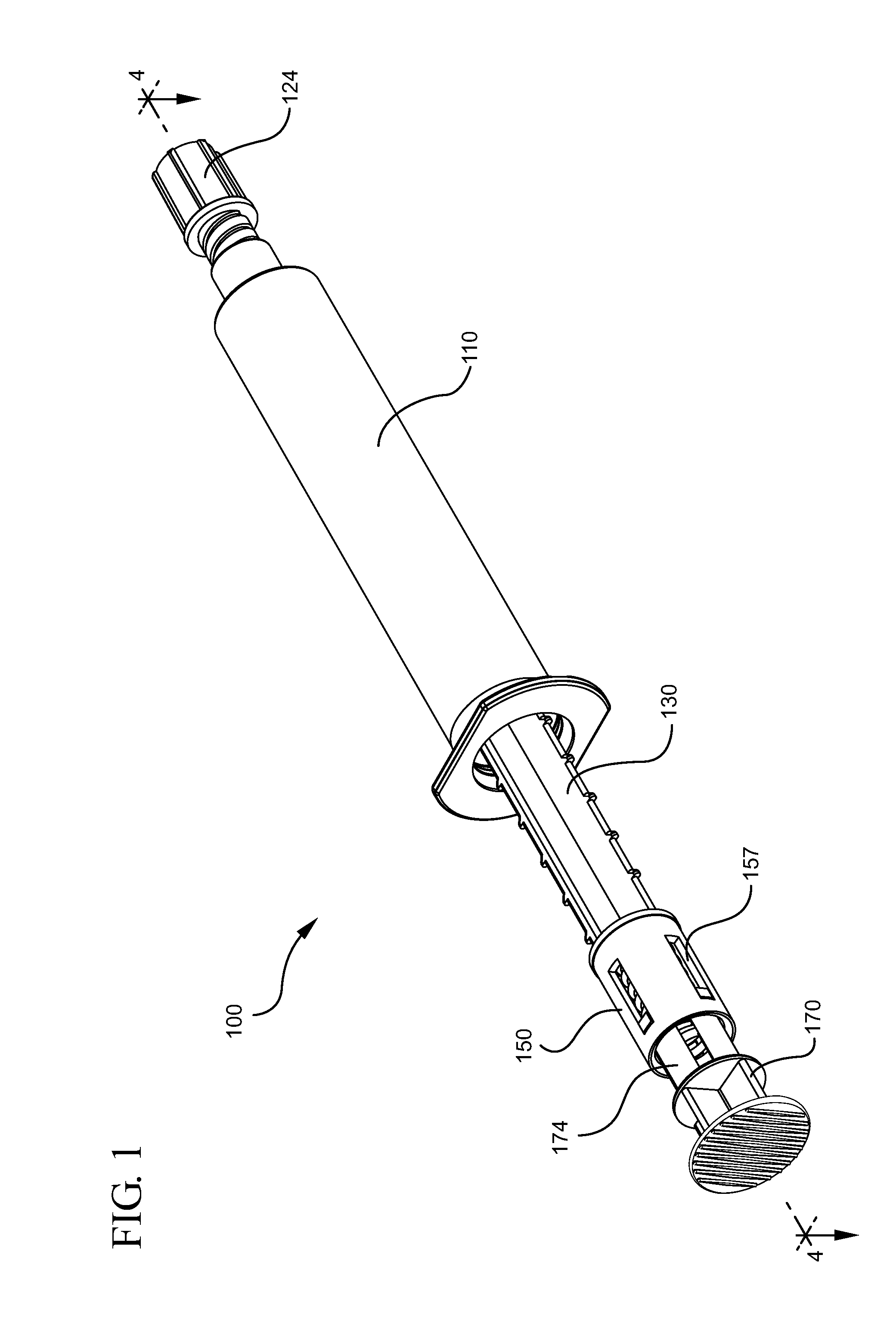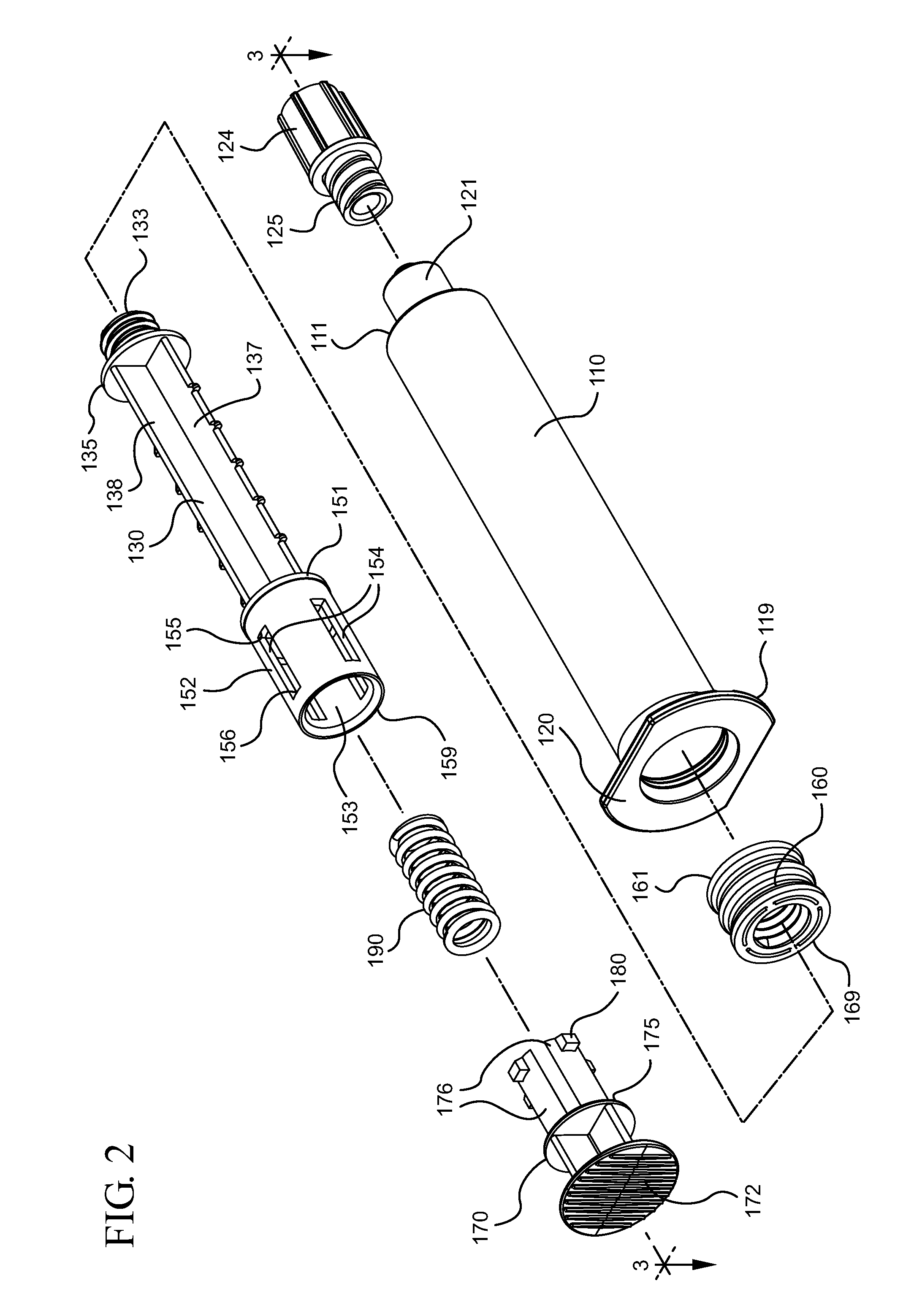Flush Syringe Assembly With Controlled Pulsatile Flushing
a syringe and pulsatile technology, applied in the field of flushing syringe assemblies, can solve the problems of requiring expensive and potentially dangerous methods, partial or complete blockage of vad's, and occluded vad's, so as to increase and reduce the length of the plunger rod body
- Summary
- Abstract
- Description
- Claims
- Application Information
AI Technical Summary
Benefits of technology
Problems solved by technology
Method used
Image
Examples
Embodiment Construction
[0045]Before describing several exemplary embodiments of the invention, it is to be understood that the invention is not limited to the details of construction or process steps set forth in the following description. The invention is capable of other embodiments and of being practiced or being carried out in various ways.
[0046]A first aspect of the present invention pertains to a flush syringe assembly configured to permit pulsatile movement of the plunger rod. The pulsatile movement of the plunger rod imparts pulsing flow to the flush solution as it is expelled. The first aspect of the present invention also includes flush syringe assemblies with a pulse control element to control the pressure of the flush solution being expelled by the flush syringe assembly. A flush syringe assembly 100 according to an embodiment of the first aspect of the present invention is shown in FIGS. 1-16.
[0047]FIG. 1 shows the flush syringe assembly 100 in an assembled state. The flush syringe assembly 1...
PUM
 Login to View More
Login to View More Abstract
Description
Claims
Application Information
 Login to View More
Login to View More - R&D
- Intellectual Property
- Life Sciences
- Materials
- Tech Scout
- Unparalleled Data Quality
- Higher Quality Content
- 60% Fewer Hallucinations
Browse by: Latest US Patents, China's latest patents, Technical Efficacy Thesaurus, Application Domain, Technology Topic, Popular Technical Reports.
© 2025 PatSnap. All rights reserved.Legal|Privacy policy|Modern Slavery Act Transparency Statement|Sitemap|About US| Contact US: help@patsnap.com



